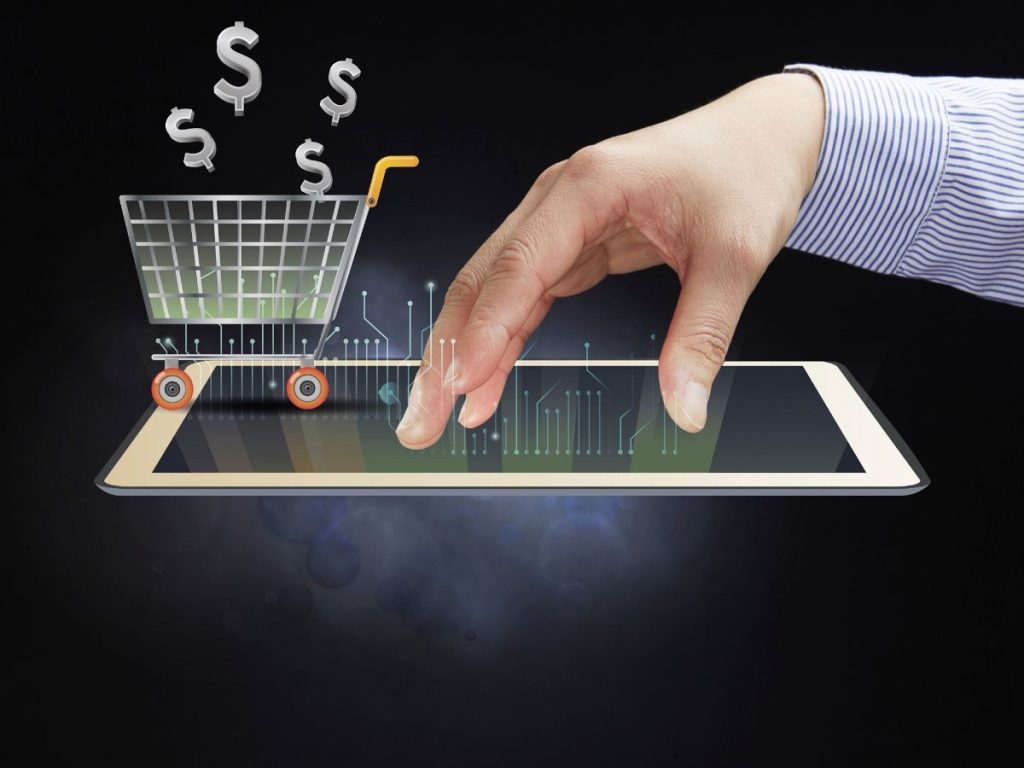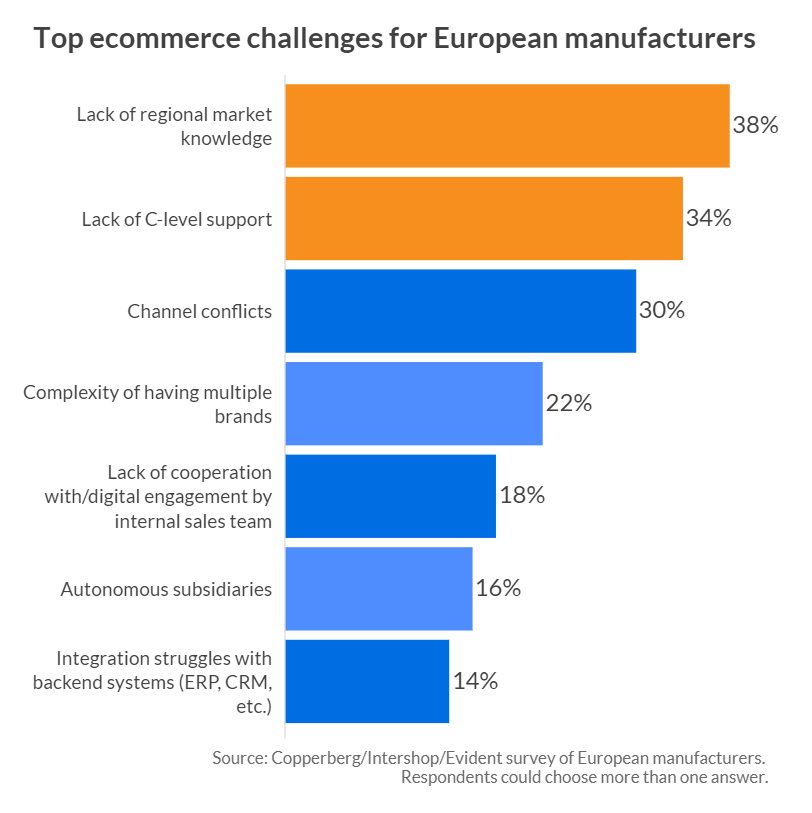European manufacturers strive for more self-service ecommerce

Manufacturers in Europe have prioritized developing self-service ecommerce but face such challenges as channel conflicts and lack of support from management, a new study finds.
Manufacturers, both foreign and domestic, face the same set of challenges—and priorities—when it comes to B2B digital commerce.
A small survey of 50 European manufacturers from Stockholm-based digital commerce research firm Copperberg and ecommerce firms Intershop and Evident finds that a lack of regional market knowledge (38%) and a lack of support from the organization’s top executives (34%) are the top two challenges standing in the way of developing or expanding a digital commerce strategy.
But the top priority for rolling out or expanding B2B ecommerce is developing digital self-services to increase buying convenience (62%), according to the Copperberg survey.


What is digital self-service?
Digital self-service is a solution or a group of solutions enabling web users or employees to be completely autonomous on a website or intranet.
These tools and information enables them to find the answers to their questions without having to contact customer suport or their HR department. Digital self-service usually affect actions that are quite simple, such as asking for a quote or even managing a contract.
Why is self-service important?
The implementation of one or more self-service solutions becomes relevant when a client service department is facing numerous online requests, to the point where it’s humanly difficult, if not impossible, to manage these.
Beyond this, self-service meets the ever-growing needs of Internet users: autonomy and speed.
Studies are clear on this point: web users first look for a way to find the information on their own before contacting customer service.
A Zendesk study shows that 81% of customers try to take care of their own problem before reaching out to support channels.
If you don’t manage to meet their expectations, you risk suffering the wrath of your clients. With users hyperconnection, a customer lets his entourage and the entire web know that he is not satisfied. This word-of-mouth, or even worse this bad buzz, can have a significant impact on your business and drive away potential prospects.
76% of clients have stopped doing business with an organisation due to its poor client service and 39% have even immediately abandoned their purchase to switch to another supplier.
Benefits of digital self-service
Self-service can take many forms and be adapted to a multitude of sectors and services. Its benefits are numerous:
- Increased customers’ satisfaction
By providing an optimized customer experience to your users, through a solution that effectively answers their questions, available 24/7, you give them autonomy and time savings that will make all the difference. A satisfied client is a loyal one! According to a Salesforce study, more than 88% of clients say that an immediate answer to their issue encourages loyalty.
- Reduction of low added-value incoming contacts
“I’ve lost my confirmation”, “Where’s my parcel?” or “I’ve lost my credit card”, this type of questions with low-added value are recurring ones in all customer services. These routine questions are time-consuming for customer advisors to handle because they are the most recurring ones. Yet at least 80% of these low added-value contacts can be fully automated. By responding automatically to these routine questions, your team members will have more time to devote to contacts with greater added value or to real issues and you will be able to observe a reduction in incoming contacts ranging from 30 to 50%!
- Increase in conversion rate
Self-service solutions are designed to simplify the customer journey. By streamlining access to information and communicating it at the right time you will gain your client/prospect’s trust.
Self-service solutions also offer the possibility to dynamize sensitive processing funnels, such as quotations, and thus promote conversion.